Media | Articles
Plymouth’s 1964 Satellite II concept survived a Michigan high school shop class
Plymouth had big plans for 1964. In addition to revising styling across the model line for the Savoy, Belvedere, Fury, and Sport Fury, designers prepped to stormed three major U.S. auto shows with three unique concepts. The car bound for Chicago was the Satellite II—a dazzling removable-top two-door based on the ’64 Fury. Some of the concept’s most prominent design and styling cues would influence later Plymouths, including the triple-taillight motif that appeared on the ’65 Sport Fury and the full-length center console seen on the ’66 Charger. (The B-platform production Satellite soon arrived for the 1965 model year.) With its gold metallic paint and over-the-top interior, the Satellite II melded California-born Kustom imagination with Detroit flash.
Plymouth is now gone. And even in the heyday of Detroit manufacturing in the 1960s, the concept cars lucky enough to escape the crusher didn’t always stick around for posterity to someday enjoy. The 1964 Satellite II did just that, however, surviving nearly sixty years on a winding path that’s now landed it in the care of a lifelong Mopar obsessive.
Dan Myers’ Wayland, Michigan farm house is located down a long gravel road, roughly half an hour north of Kalamazoo. He’s 76, a retired electrical maintenance and machine repair worker, wearing a blue mechanic’s jumpsuit and a broad smile. Parked next to the house is the Satellite II, set against a knee-high field of corn that’s whispering in the gentle breeze. “Should be up to my shoulders in two weeks,” Myers says as we make our way toward the old show car. His gait is patient, unhurried.

Today, this relic of Plymouth history looks like it braved some rough years after its time in the spotlight ended. All that remains of the original shimmering paint is a gilded stripe behind the passenger door handle; the rest is a faded black. Three of the original headlights are missing. The interior is well-burnished, with upholstery held together in a couple places with duct tape.
Despite all this, it’s obvious that the car must have been an absolute stunner when attendants tore off the show-car cover. The combination of wood and painted chrome is lovely, even in its present condition. Though the leather is now well past its prime, there’s no question it was once a sumptuous feast of mid-’60s optimism. Myers’ eyes light up as he points to all of the Plymouth’s fantastic details. He revels in each styling element and how it stacks up against those of his 1965 Sport Fury. “This grille is special,” he says, one hand resting on the network of old metal. “It’s unique and totally handmade.”
Marketplace
Buy and sell classics with confidence
Of course, if you consider the usual toll a college design class and a high-school auto shop class take, it’s obvious that somebody who cared made sure the Satellite II endured. Though it’s not clear what happened to the show car immediately after its tenure in Chicago, by 1968 or so this golden sculpture of American design and engineering ended up in Kalamazoo at Western Michigan University’s engineering design department. “That’s where the motor likely went in,” says Myers of the 318-cu-in wide-block under the hood. “As the story goes, factory workers claimed there was no engine in the car. The firewall isn’t even painted.”
As Myers tells it, one of the students that came through the design program at WMU was from Wayland. When he went back home after graduation, in 1972 or ’73, the car followed him home—to Wayland Union High School’s auto shop. Students eventually painted the body, without finishing, and later practiced some body-filler work on it. Though the shop teacher made an effort to keep it somewhat hidden from outside prying eyes, the Plymouth did make an appearance in the school’s homecoming parade some time in the ’70s. Soon after, however, something more exciting began to steal its thunder. “The high school got some kind of Camaro, a ’69 I think. Everyone was hot for that, of course,” Myers says.

The concept car remained at Wayland Union High until 1992, when the auto tech shop shut down. The owner of the local Chrysler/Plymouth/Dodge dealership, Gene Modreske, at that point bought several pieces of equipment from the facility—including the Satellite II for safe keeping. Modreske was active with the school, and some of his mechanics on staff even remembered the old concept car from their shop class.
Myers walks up closer to me—just out of his wife’s earshot—and rests his hand on my shoulder. They were old friends, he and Modreske. A pair of Mopar die-hards growing up in the country and developing a love for cars and old tractors. “We played hard in the ’60s,” he reflects, lowering his voice a little. “Miracle a lot of us didn’t end up dead.”

Modreske didn’t do much with the car from the time he got it in 1992, and Myers often bugged him about it over the years. In 2018, as Modreske was coming to grips with the final stages of a long fight with cancer, his friend assumed responsibility for the car, not without a deep feeling of emotion. Modreske passed away later that year. “We did a lot of car showing together. He was my best buddy for 50 years. I’d call him my brother—I lived with his folks when I was a kid.” Myers gets choked up. He sticks his hands in his pockets, looking down at his feet while he collects himself.
“I decided to honor him by putting it out there and showing what Plymouth could do.”
That meant getting to work. The car had sat idle for nearly 30 years. On the night Myers brought it home, the Plymouth had no brakes, didn’t run, and the engine wouldn’t even turn over. On his way back to the farm, he passed by his friend Clayton Jackson’s house. Jackson was an auto shop teacher at Wayland Union High during the Satellite’s tenure, and he happened to be in the driveway when the car went by on its trailer. He promptly followed Myers home, eager to see the old thing on its first step to rejuvenation. “For the first few days, I’d just roll it over little by little,” Myers says. He soon got it running, adding a muffler to the exhaust to keep the noise down.

The body and interior were another challenge entirely, especially with all of the chrome parts (excluding the front bumper) locked in the trunk. “Nobody could even figure out how to get in there. I found a little pull throttle cable under the back seat and that did the trick,” Myers explains. “I saved every little piece of trim I could find.”
Faded plaid fabric lines the floor of the trunk, which also houses the fuel filler; a concept car has no need for an unsightly gas cap. Myers also found back there a box with three of the Satellite II’s four headlights, unfortunately broken and irreplaceable. The only intact original is installed on the car. No luck on the original gold-trimmed hubcaps, either.
Once it was in reasonably good shape, Myers trailered the car to the Muscle Cars and Corvette Nationals show in—where else?—Chicago. In 2019, he brought it to Carlisle’s Chrysler Nationals. Everywhere he’s showed it, people with ’64 Plymouths hound him for the unique wheelarch and body trim pieces. He tells them all the same thing: “No.”
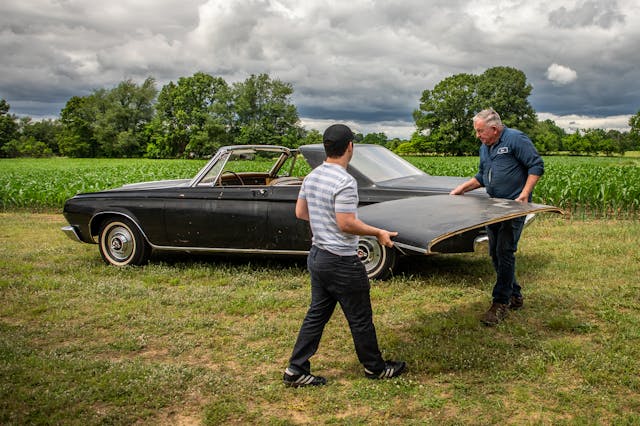
Myers tells me that more than anything else, though, it’s the removable top that makes people’s jaws hit the floor. He motions for me to help, and I assist him in unfastening it from the top of the A-pillar. It’s not as heavy as it looks, and we carefully guide it over the back of the car and set it down on the grass. Looking at the now-roofless concept car, I see his point. The Satellite is so much more interesting, more dramatic-looking to the eye with the cabin exposed and the enormous C-pillar jutting up from the trunk. C.E. Briggs, the vice president of Chrysler Motors Corporation and Chrysler-Plymouth’s general manager said in 1963 that of all ’64 Plymouths, “The most distinctive is the two-door hardtop, which has a completely new roof line combining a fleet appearance with a convertible motif.” If anything like the Satellite were available in showrooms, Briggs would have amended that comment.
Given how special the one-off Plymouth is, Myers isn’t overly sentimental or protective of it. As I go to close one of the doors to stage the car for photography, I ask him if I need to close it gently. “Just shut it. It’s a door,” he says, totally matter-of-fact. In that same vein, Myers has no problem driving it up and down the gravel road leading to his house, even handing the keys to one of his three teenage grandkids for some casual 15–20-mph cruising. They love getting behind the wheel, he tells me. What Myers would love most would be to track down the other two 1964 concepts from Chrysler—the Dodge 880 and the Cuda—in a kind of glorious reunion.

The engine fires up on the first try, responding instantly to the simple toggle switch and push-button setup underneath the dashboard. “It’s a fantastic starter,” gushes Myers. That smile forms again.
He pulls out onto the gravel road so I can see what the car looks like in motion—a somewhat thrilling experience given the Satellite II was never meant to do much else aside from rotate on a show stand. Really, the car wasn’t really built to last at all. Yet it’s still here, a dimmed vision of a once-near future. Myers wanted to do right by Modreske, the Chrysler dealer, by showing off what their favorite company could do at perhaps the height of its powers. More powerful still are the lengths Myers has gone to honor a dear friend. His restoration of the Satellite II continues.
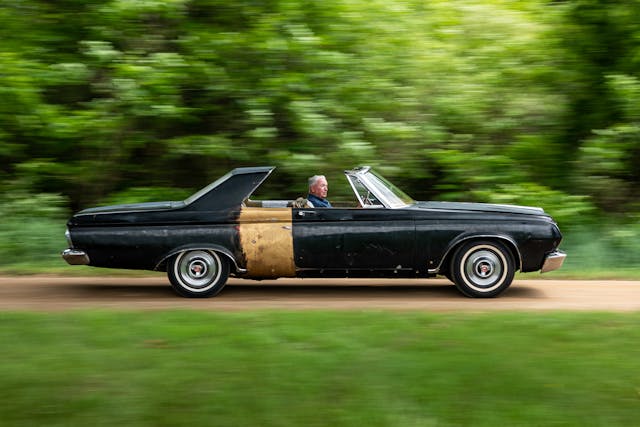






















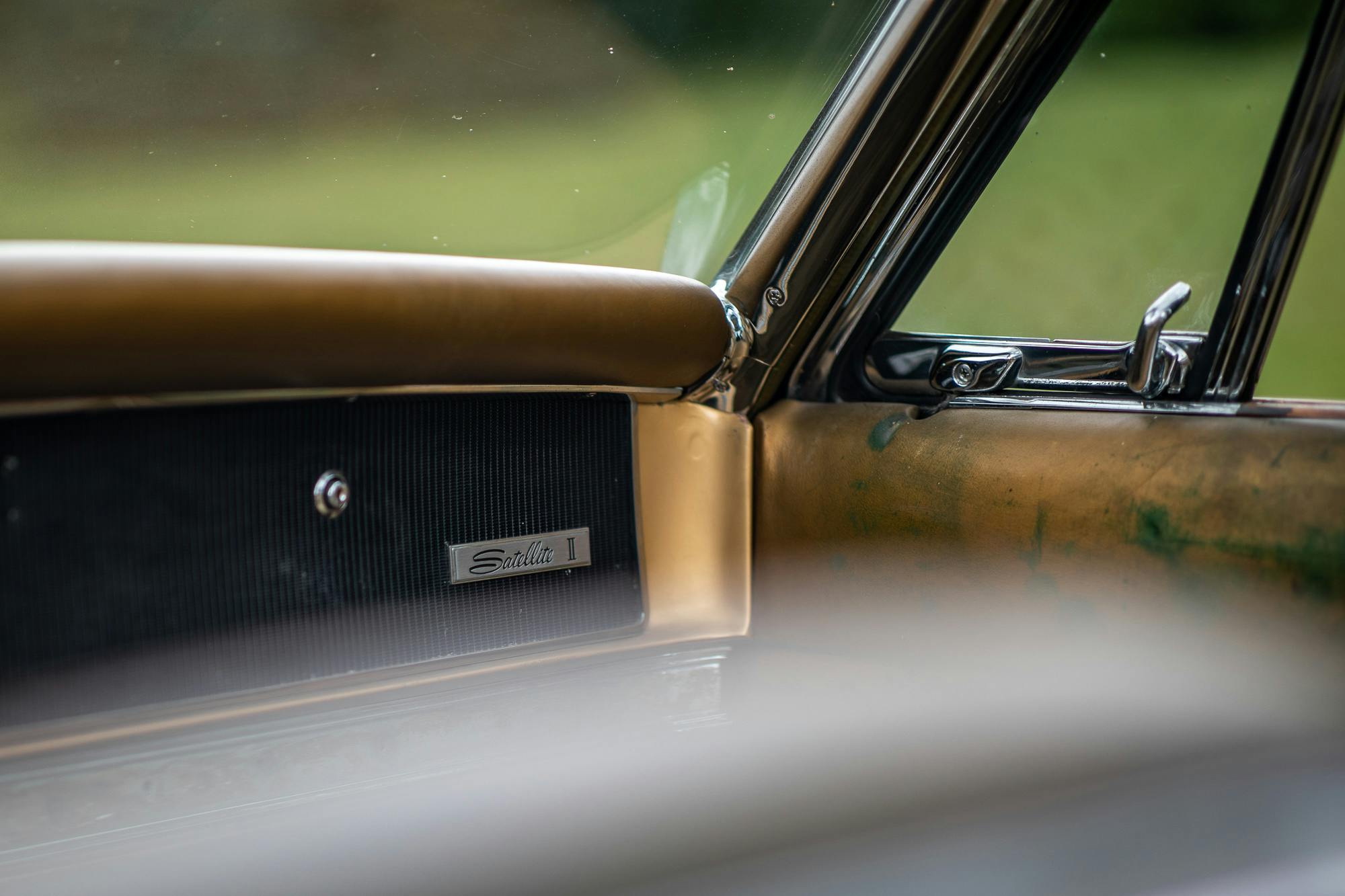

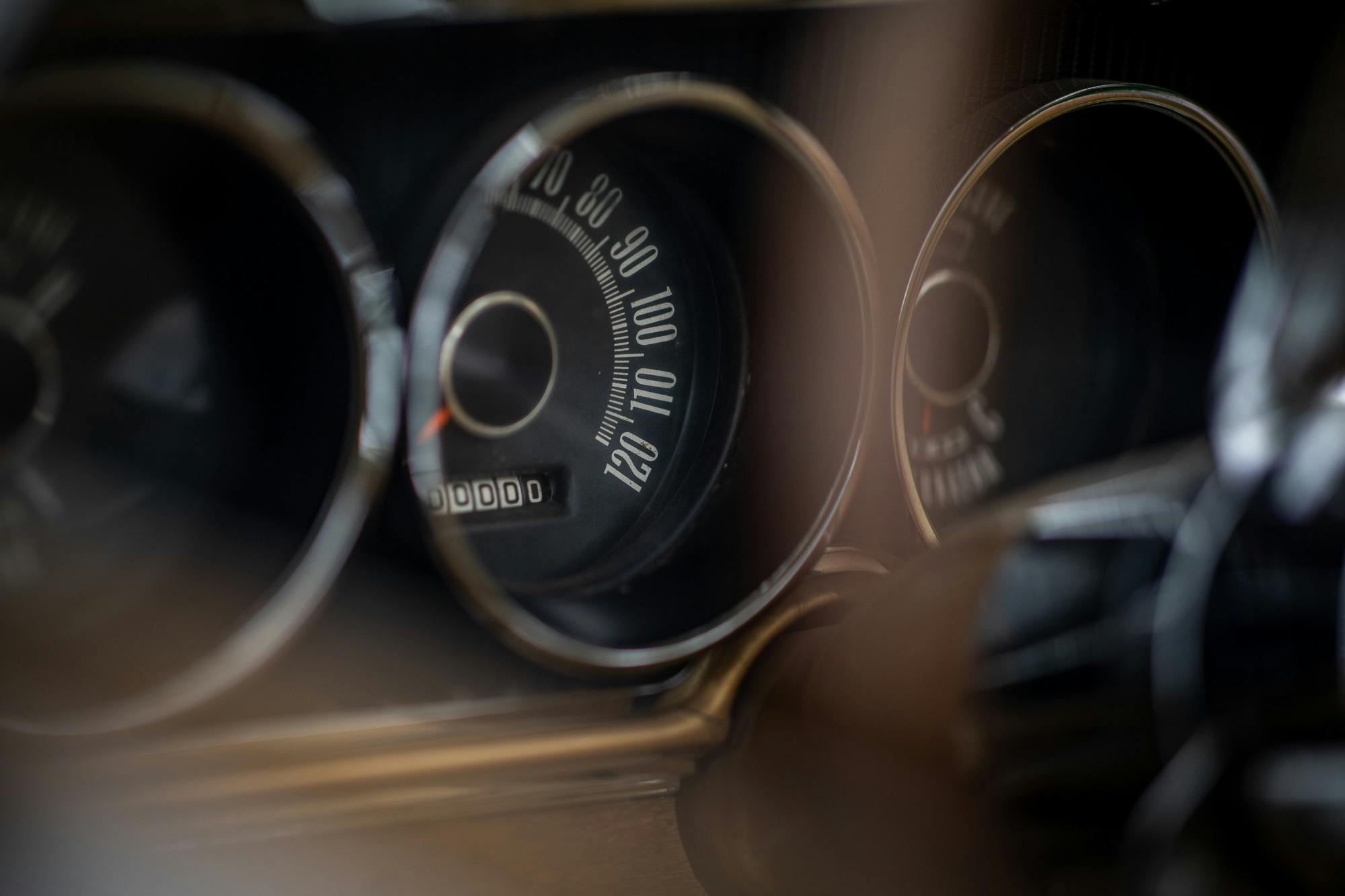
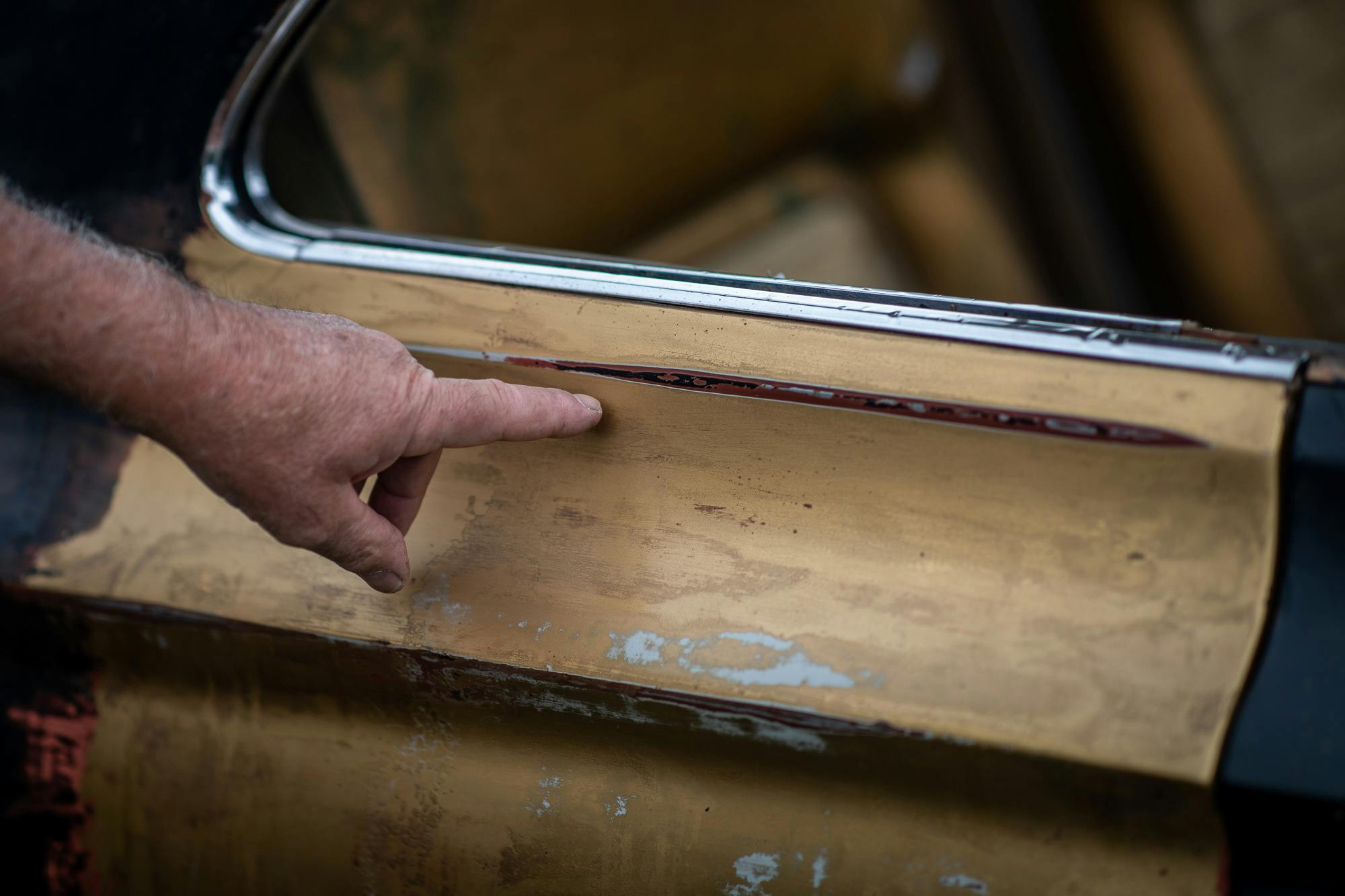







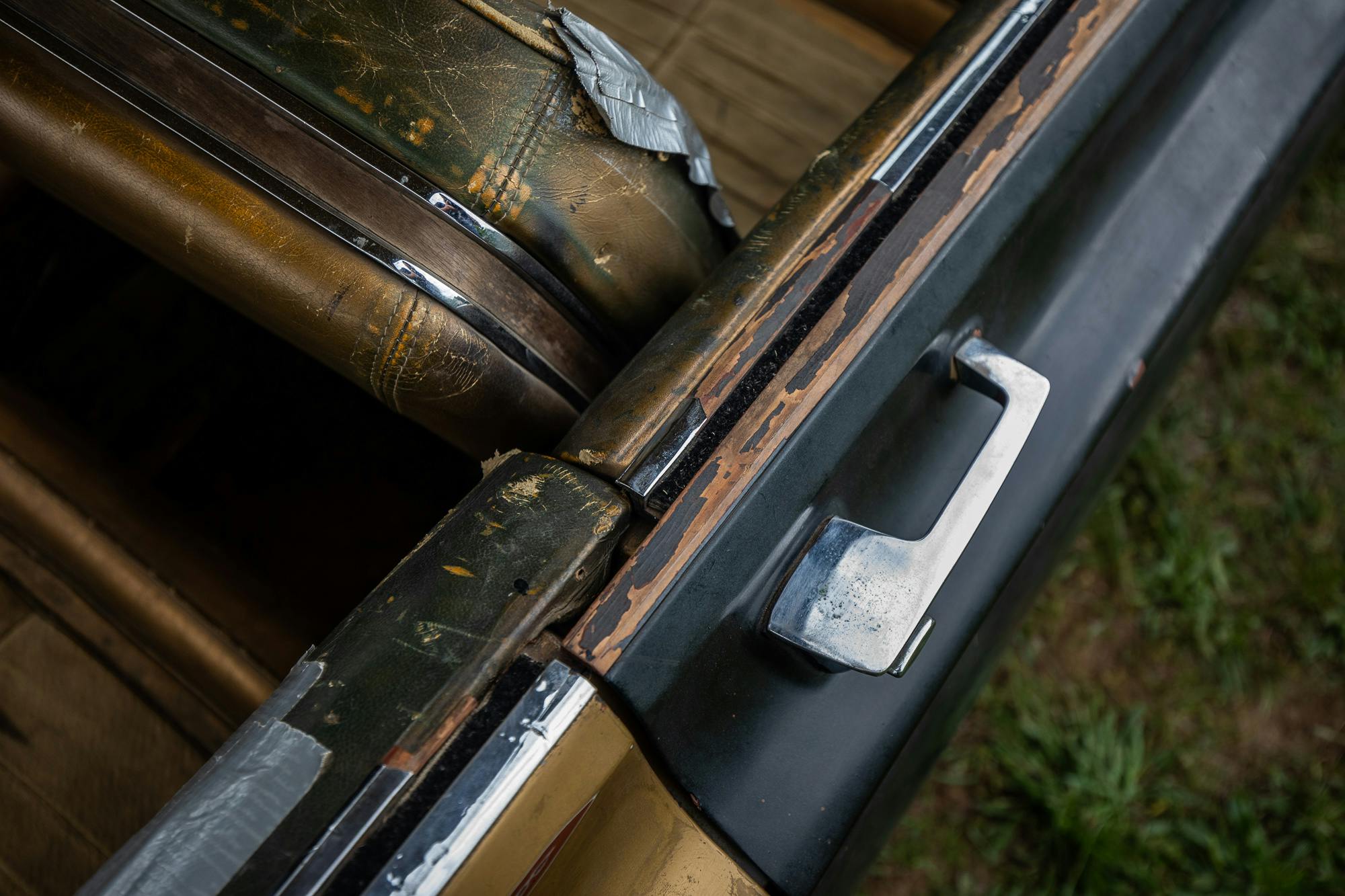































































Great article. I believe the original headlights are Lucas Flamethrowers. If that’s the case, they do occasionally turn up. Would love to have seen this car in its prime!
This is one that should be restored!
In 1985 I had this car running and driving
In 1985 I had this car running and driving (after sitting since the 70s in a pole barn behind the auto shop class). I was the student assistant in Wayland . Most of the interior was carved wood that was either stained or cover in upholstery. The missing (borrowed) headlights and speedo cable ended up on a 1971 Roadrunner I was also working on at the time. I tell the story of this car all the time and no one ever believes me that such a rear piece of Mopar history was just sitting there at a country school auto shop……Thanks now I have proof
We must have been in the same class as i am the guy who had the blue 71 Roadrunner and was in the class 85-86 Year and the 86-87 year that car was in much better shape. When i saw it the last time.